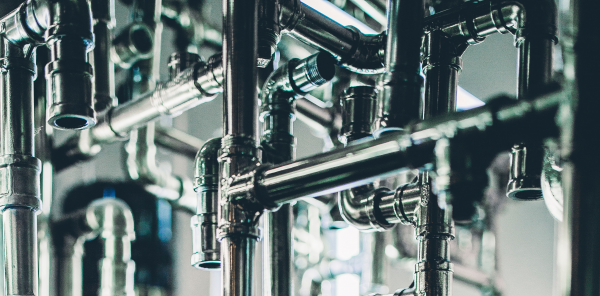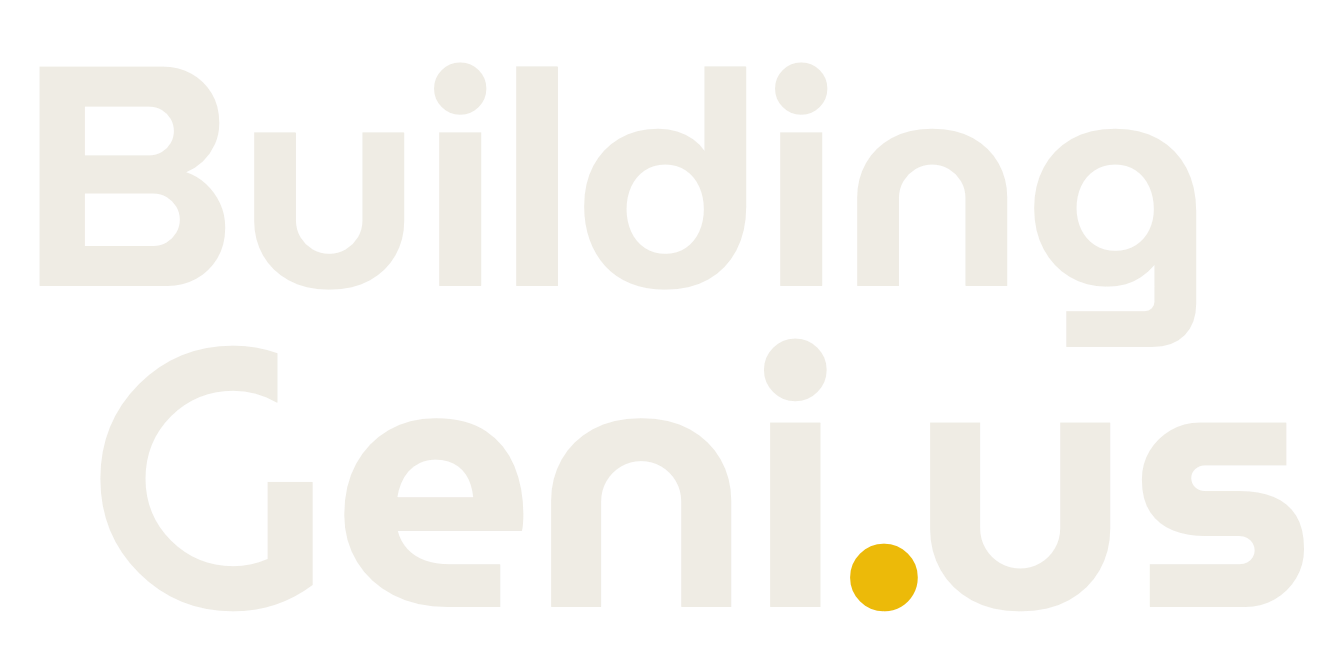As I introduced in my previous article, we at Beyond Efficiency are in the process of developing simulation models for hot water distribution systems. We believe that these tools will support industry practitioners ranging from researchers to Title 24 consultants, to building designers, and everybody in between.
But why will these tools be useful? What can they do? And how hard will they be to use? Let's take a look at the current functionality to answer those questions.
What can the models do?
The very base of Beyond Efficiency's hot water distribution system models is a model of a single pipe. The intent is that users can create a model of each pipe in the distribution system by creating separate instances of the pipe model. These instances of the pipe model, each representing separate pipes, are then combined with the outlet from one pipe model representing the inlet to another pipe model. In this way, a pipe network representing the distribution system is formed.
This structure makes one thing very clear: the capabilities of the base pipe models dictate the capabilities of the distribution system models.
What are the functions of the base pipe models?
The pipe models are meant to represent a realistic model of a typical pipe that somebody would use in a hot water distribution system. While they're still in development, the goal is to eventually have all heat transfer and pressure/flow calculations required to accurately model a distribution system included. To enable these calculations, the pipe model must be able to accept all necessary inputs to describe the construction of the pipe as well as inputs to make the simulation models more accurate and user-friendly. To this end, each instance of the pipe model has the following inputs and parameters:
- Name: This is a user-supplied name for the pipe. It doesn't dictate any calculations in the model, but does help the user keep track of which pipe model represents which pipe. For instance, the model representing the twig serving the kitchen sink could be named Twig_Kitchen_Sink.
- Number Nodes: This is a parameter that's used to make the simulation models more accurate. Without this parameter the model treats each pipe as being completely uniform, with no variations in water temperature throughout the length of the pipe. If you're modeling a pipe that's 100 ft long this would be a ludicrous assumption. To make the model more accurate, you need to be able to break that pipe up into smaller segments. This parameter defines the number of segments in the pipe.
- Length: This parameter sets the length of the pipe being modeled.
- Inner Diameter: This parameter sets the inner diameter of the pipe being modeled.
- Thickness Pipe: This parameter sets the wall thickness of the pipe being modeled.
- Material: This parameter specifies the material used to create the pipe. Current options are 'Copper' and 'PEX' (Note that spelling is important here!). The model then uses the specified material to determine the conductivity of the pipe. When thermal capacitance effects of the pipe are added, the model will also identify the correct specific heat and density accordingly.
- Temperature Water: This attribute of the pipe model states the temperature of water in each node of the pipe model. It's a list with the first entry representing the temperature in the first node, the second representing the second node, and so on. If no input is provided by the user, it defaults to starting the simulation at 20 °C. This attribute is updated throughout a simulation as the temperature of water in the pipe changes.
- Thickness Insulation: This parameter describes the thickness of the insulation installed around the pipe.
- Conductivity Insulation: This parameter specifies the conductivity of the insulation installed around the pipe.
These parameters allow the user to create models representing the pipes that they need to simulate. Once a pipe model is created, they need available functions to actually predict the performance of the pipe. To allow that, the pipe models currently have the following available functions:
Heat Exchange With Ambient: This function calculates the heat exchanged between the pipe and the ambient conditions over a given timestep. It takes inputs describing the ambient temperature and the duration of the timestep to be considered. Since it's a function of the pipe model it does not need inputs describing the pipe itself to be passed in, they are already acquired.
- Heat Exchange With Flow: This function calculates the heat change in the pipe caused by water flow through the pipe over a given timestep. It takes inputs describing the inlet temperature, flow rate, and timestep. Similarly to Heat_Exchange_With_Ambient it doesn't need the pipe model information to be passed to it because, being a function of the pipe model, it already has those.
- Update Temperature Water: This function calculates the change in water temperature in each timestep, adds or removes that temperature change from the water in each node, and reports the resulting water temperature. To do this it calls both Heat_Exchange_With_Ambient and Heat_Exchange_With_Flow, then calculates how much temperature change is caused by that amount of heat transfer.
- Get Outlet Temperature: This function allows the user to read the outlet temperature of the pipe model. This is very important as the outlet temperature from one pipe needs to be used as the inlet temperature for another pipe, and the outlet temperature from certain pipes is the temperature of water provided at fixtures. A user can call this function to set the inlet temperature of the next pipe, or use this function to observe the outlet temperature from the distribution system.
How hard are these models to use?
I'm sure that we've all heard about the "GIGO" problem. Garbage into the model ensures that you get garbage out of the model. One of the hardest parts of simulation modeling is finding the correct inputs that you need to perform the modeling. Beyond Efficiency's pipe models are being designed with useful tools designed specifically to avoid this problem. Currently, this shows up in three ways:
- Inputs from McMaster-Carr: The base form of the pipe models is a generic pipe model with no parameters specified. This is the most flexible form as the user can specify any pipe they want. To help facilitate this process, the models were designed to accept user inputs taken from McMaster-Carr. A pipe can be defined by reading the specs on this common lab supply webpage, and using them as parameters when defining the pipe.
- Specific Pipe Models: We took the ease of McMaster-Carr based inputs a step further, and created specific pipe models with those inputs already entered. There are pre-made classes of the pipe model for copper pipes, PEX tubes, thick wall and thin wall varieties, ranging from 3/8" to 1" diameter. These classes have clear names so you can find the one you're looking for. For instance a model of a 1/2" diameter, thick wall copper pipe can be created by calling the class Pipe_Copper_OneHalfInch_ThickWall. Then the inputs describing the pipe are pre-included.
- Insulation Definition Function: The conductivity of insulation is not readily available in the US, and typically has to be calculated from the R-value. This can make specifying the conductivity of the insulation challenging, especially because the pipe models are based in SI units instead of IP units. We helped with this problem by adding the function Convert_RValueIP_to_ConductivitySI. This function takes the R-value and thickness, which can be found on McMaster-Carr, and converts it to the conductivity of the insulation in SI units.
Wrapping It Up
This article provided a not as brief as I would like introduction to the capabilities, functions, and user-friendly features of the pipe models being developed by Beyond Efficiency. We believe that these pipe models will allow the functionality needed to create models of distribution systems, then input draw profile assumptions, and predict the performance of different distribution system designs. These tools should enable you to perform better analysis in your research, consulting, and designs.
What do you think? Are we missing some obvious functionality? Is there a niche case you need solved that you think these models won't address? Do you have requests for ways to make these models more user friendly? Don't hesitate to reach out and let us know!































